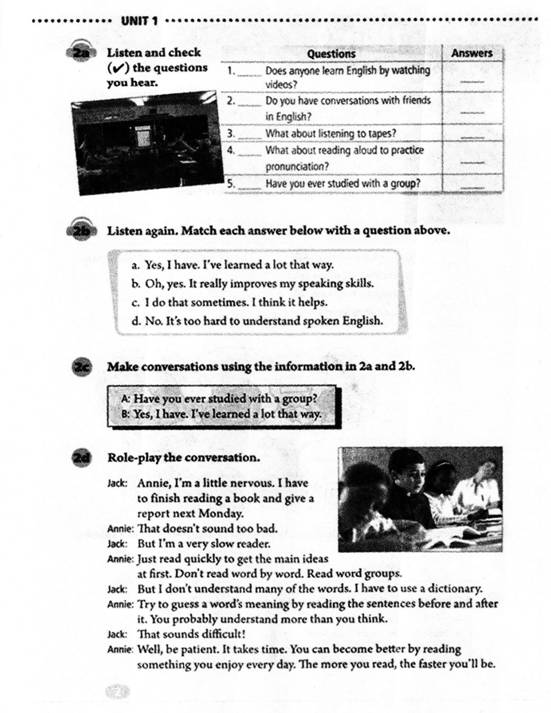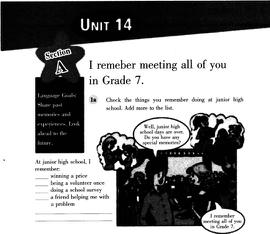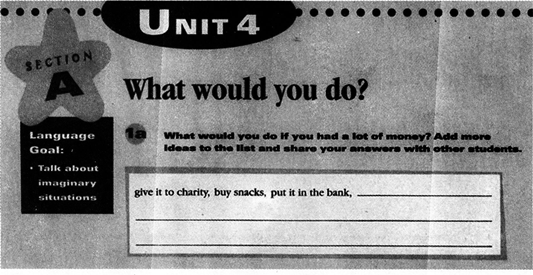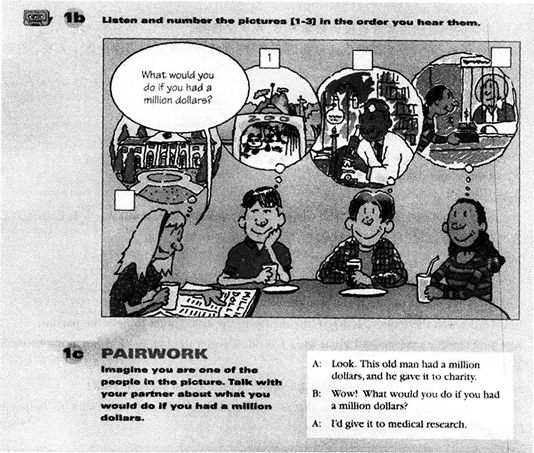Teaching Contents: An Advertisement about a clothes store.
Teaching Objectives:
(1) Knowledge objectives
Students can consolidate the sentence patterns "How much is ... It's ...""How much are these ... They're ...",master the phrase "at a good price" and become more familiar with the topic of shopping.
(2) Ability objectives
Students can ask about prices, talk about clothing, and use two reading strategies--skimming and scanning to get the information from the passage.
(3) Emotional objectives
Students will have a basic concept of consumption and their cooperative awareness will be improved.
Teaching Key Point:
How to guide students to use the two reading strategies--skimming and scanning to get the meaning of the passage.
Teaching Difficult Point:
How to use the reading strategy of scanning to get some specific information from sale ad.
Teaching Procedures :
Step 1 Pre-reading (5 minutes)
(1) Guessing
The teacher shows six clothing items and asks students to match each clothing item with a price.
1. a skirt __________ 2. a sweater __________3. socks __________
4. trousers__________ 5. shirts __________6. shoes __________
a.$3 b.$15 c.$20 d.$22 e.$25 f.$25
(2) The teacher shows a pair of nice shoes with the price of only $20 and a nice skirt priced at $10 on the screen.
T: If you buy something good in a low price, we can say this thing is at a good price.
Then the teacher teaches the phrase "at a good price". Students repeat the words after the teacher.
(3) The teacher asks students to pay attention to the picture and the title to predict the general idea of this passage. The teacher can ask some questions:
① What can you see in the picture
② Where are the clothes
③What's the store's name
Then the teacher encourages students to answer these questions.
(Justification: The guessing and prediction can make reading more intriguing. Teaching new phrase can make their reading much easier.)
Step 2 While-reading (9 minutes)
(1) Fast reading
T: Mr. Cool's Clothes Store has a great sale. Read the passage quickly and finish two tasks below.
① What's the main idea of the passage
②Check your guessing before.
Then the teacher checks the answers.
(2) Careful reading
According to the questions, the teacher draws a chart on the blackboard and asks students to read this ad again.
Then the teacher asks some students to fulfill the chart.

The teacher and the other students check the answers and give them some assessment.
(Justification: Fast reading can help students train their skimming skills. Filling out the table can make students pay more attention to the details of the passage, and it' s important for them to develop their scanning skills.)
Step 3 Post-reading (6 minutes)
(1) Pair work--Fill in the blanks.
T: Imagine you work at Mr. Cool's Clothes Store. Complete the conversation in pairs.
A: Hello,__________I help you
B: Yes, please. I need a __________
A: How about these purple __________
B: Oh, I like this one. How __________ is it
A: It's only __________ dollars.
B: Oh, good. I'll __________ it.
Then the teacher asks two pairs to show their dialogue to the class and gives them proper assessment.
(2) Group work--Discussion
The teacher divides the students into 8 groups and asks them to talk about what they should buy if they have $10. Then the teacher asks several students to show their ideas.
Then the teacher makes a summary:
When we go shopping, we should consider our purchasing power, and in our daily life, we should establish reasonable consumption habits.
(Justification: Pair work can help students practice how to ask about prices and talk about clothing. Group work provides students with an opportunity to communicate with others and practice their oral English.)











